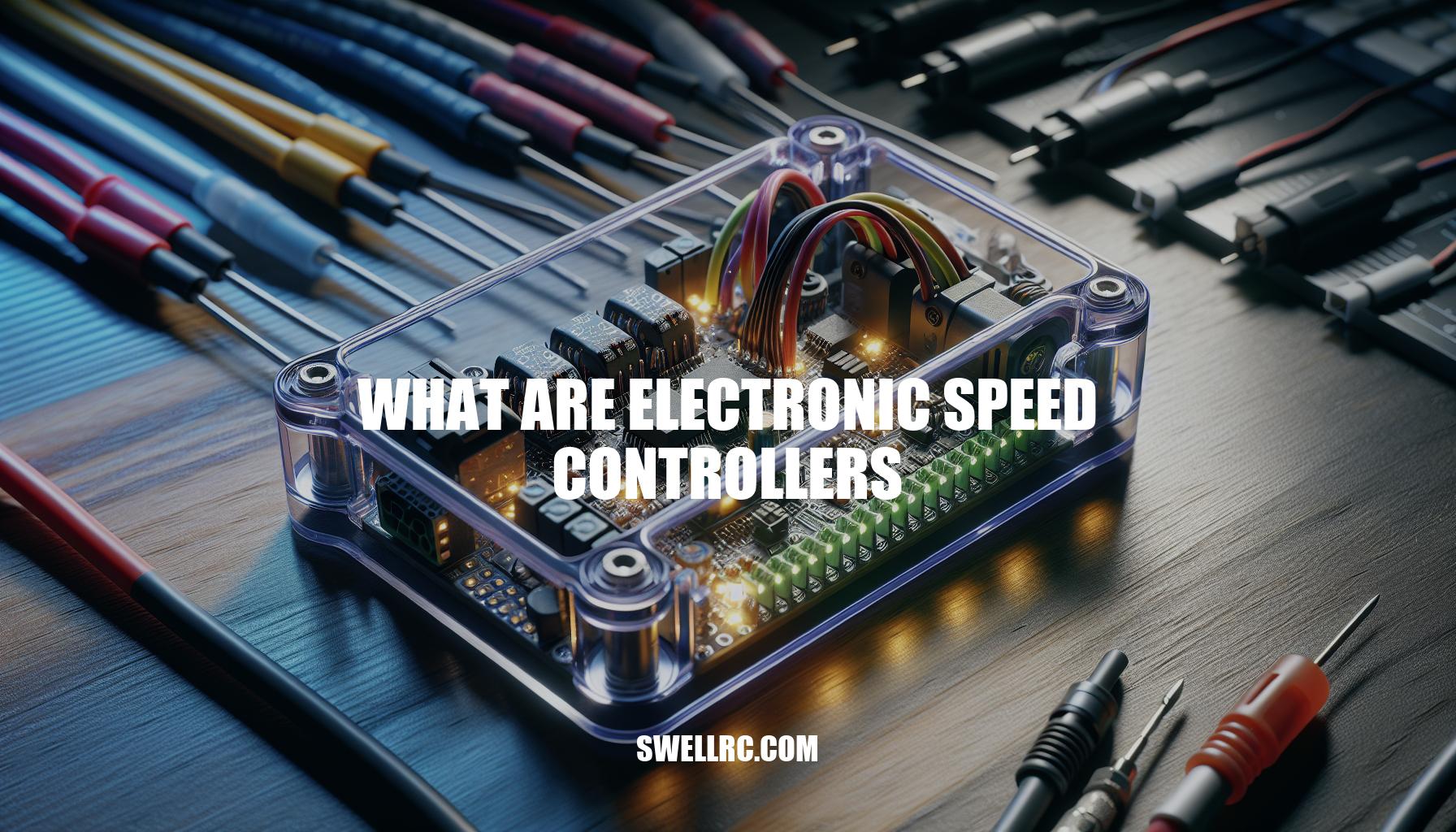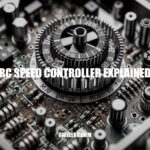Understanding Electronic Speed Controllers: What Are Electronic Speed Controllers and How They Work
Have you ever wondered how you can take control of the speed of your radio-controlled car, boat or plane? Say hello to electronic speed controllers, or ESCs as they’re lovingly called by enthusiasts. Acting as the electronic “heartbeat” of these devices, ESCs precisely regulate the motor’s speed, letting you zoom, glide, or sail at exactly the pace you desire. It’s kind of a big deal, with the global electronic speed controller market set to hit a whopping USD 8.95 billion by 2021! Indeed, without these marvels of technology, driving your RC car would be as unpredictable as a rollercoaster ride. So let’s buckle our seatbelts as we set off on an exciting journey exploring the world of ESCs – their history, how they work, and just what makes them so essential in our favorite RC devices.
The Evolution of ESCs: From Basic Resistors to Advanced Microprocessors
The journey of what are electronic speed controllers (ESCs) began with simple and primitive designs. Initially, they were nothing more than series of resistors and mechanical switches that were manually controlled. Gradually, their basic framework underwent significant changes and the modern ESCs we see today came into existence. A prime example of such development is Castle Creations. Established back in 1997, this company set out on a mission to revolutionize not only the market of ESCs but the entire world of radio-controlled (RC) devices. Today, it stands as one of the industry leaders, consistently delivering high-quality, microprocessor-controlled ESCs. Within the tiny, sleek body of a modern ESC lies a treasure trove of technology, crafted with precision to offer unparalleled control and stability to your ride. So next time you see an RC car zipping around the corner or a drone soaring in the skies, remember, the heart of these marvels is an ESC, pulsating with the rhythm of technology and innovation.
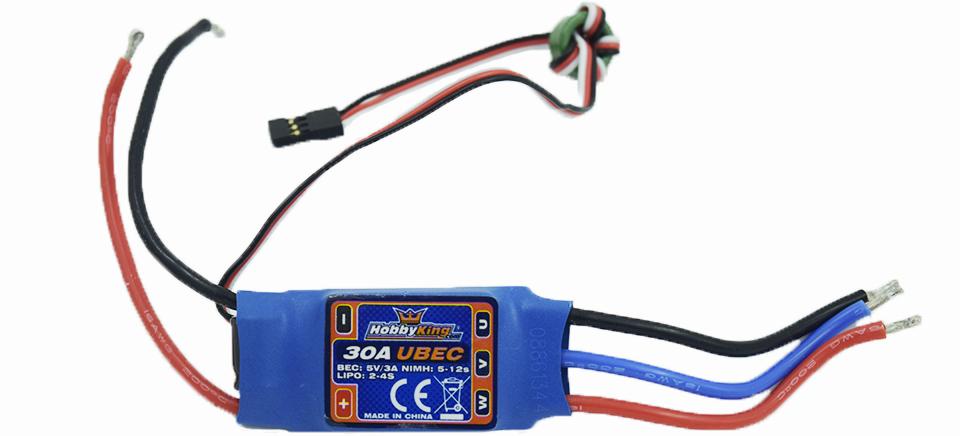
What is Castle Creations and how has it contributed to the development of electronic speed controllers?
Castle Creations, my friend, is a real game-changer in the RC (remote control) world. Born in a basement back in the mid-90s, this amazing company has grown to become an industry leader, redefining the standards for electronic speed controllers (ESCs). These little gizmos, which are essentially the heartbeat of any RC vehicle, handle an insanely complex task – they control the amount of power that goes to the motor, determining both speed and direction. You might think of them as the conductor of an electrically charged orchestra.
Now, how has Castle Creations helped? Well, imagine we’re back in the 90s, with ESCs that are large, clunky and have a tendency to overheat – not exactly user-friendly, right? Castle Creations bashes in like a knight in shining armor, spearheading a significant evolution of these devices. They’ve continually pushed the boundaries of ESC technology, producing systems that are not just drastically smaller and more efficient, but also remarkably durable and more advanced. Their ‘SmartSense’ tech, for instance, allows for smoother, more precise control, giving users the ultimate driving experience.
In a nutshell, Castle Creations didn’t just build better ESCs; they elevated the entire hobby. Thanks to their innovative contributions, the RC experience is no longer just about piloting a small vehicle – it’s about fully experiencing the joy of technology, agility, and speed. So next time we grab our RC controllers, let’s take a moment to appreciate the ground-breaking steps Castle Creations has taken to transform this hobby we all adore.
How Do ESCs Control RC Car Speed?
So, what are electronic speed controllers and how exactly do they work? Imagine you’re driving your fabulous radio-controlled car at top speed and you suddenly decide to slow down or accelerate. That’s where the magic of the ESC comes in. Now, let’s delve a bit deeper. Essentially, the ESC is like the ‘brain’ of your RC car, receiving signals from the receiver, and regulating the amount of power that goes to the motor based on these signals.
Here’s where things get a bit techy. The ESC uses a process called pulse width modulation or PWM. Think of it as the electronic heartbeat of your motor; the faster the ‘heartbeat’, the higher the speed. The PWM sends a series of voltage pulses to the motor – the length of each ‘on’ pulse determines what speed the motor goes.
Let’s think of it in terms of a light switch. If you switch a light on and leave it, you’re getting 100% light (a simple concept for us humans, far easier to grasp than PWM!). Now, picture flicking that light switch on and off really fast. The room still gets lit, but not as brightly because the light is only ‘on’ for part of the time. So now replace the light with a motor, and that’s essentially how PWM in an ESC works – it ‘flicks the switch’ of the motor at different speeds in order to control the power output and consequently, the speed!
Now, isn’t that an amazing and clever piece of kit? If you’re curious, you can find more details about ESCs on RC hobby websites such as HobbyKing or RCGroups. So next time you’re having fun with your RC car, give a nod to the trusty ESC, working tirelessly to make sure you have a smooth ride!
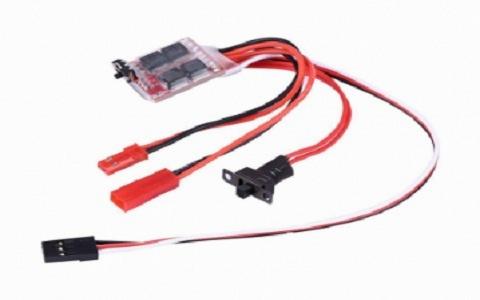
What is pulse width modulation (PWM) and how does it work in electronic speed controllers?
Ah, pulse width modulation (PWM)! It’s really something that revolutionized the way our electronics work. So, imagine you are playing a video game, and you’re on the verge of beating your highest score. The speed at which your character moves is crucial, right? That’s where PWM comes in. Simply put, PWM is like the nervous system in your electronic devices. It’s basically the way we can control the speed and power of motors and LEDs.
The PWM magic lies in its method. It strategically switches power on and off super-fast, giving you efficient control of how much power you are serving to a device. Picture a quick-flickering light. To your eyes, it may seem dim or bright, but in reality, it’s repeatedly turning on and off at such a speed that you only end up seeing an average, rather than the actual flickering.
This is how electronic speed controllers use PWM – by adjusting the width of these ‘on’ periods we call ‘pulses’. So, in our game scenario, a wider pulse could mean your character runs quicker, and a narrower pulse could make it tiptoe stealthily. The best part about this whole process? It’s energy-efficient and helps increase the lifespan of your devices. Yes, that means extra gaming hours for you and your device’s durability!
PWM has profoundly changed how we interact with our electronic devices, offering a whole new level of control. Whether it’s enhancing your game, dimming your room lights, or even cruising in an electric car, PWM is at the heart of it all.
Types of Speed Controllers: Brushless vs Brushed
Diving into the different varieties, there are primarily two types of speed controllers: Brushless and Brushed. Now, you must be wondering, which one to go for? It’s not that tricky as you imagine. Both have their unique attributes, rendering them suitable for certain applications.
First things first, Brushed ESCs. They are the traditional and economical choice. With just two wires for motor connection, their operation mechanism is simpler. Despite being cost-effective, they have a shorter lifespan, thanks to the brushes in the motor that tend to wear out over time.
On the other hand, Brushless ESCs are the newer and more advanced option. They might be costlier, but for a good cause. Fact is, they give you better efficiency and longevity, bypassing the mechanical wear and tear issue of brushed motors. Plus, they come with three wires for motor connection, lending it that added precision in control. While they truly shine in high-end models and pro applications, their value is being recognised more and more in the hobbyist arena as well.
Swinging by Castle Creations’ website, a Premier manufacturer of innovative products since 1997, reveals a product selection dominated by Brushless ESCs, seldom favoring Brushed types. Clearly a cue on where the industry is headed and a testament to why having a grasp of what are electronic speed controllers matters to every RC enthusiast. So, depending on your RC device, your budget and the degree of control you desire, you now know how to pick your perfect match!
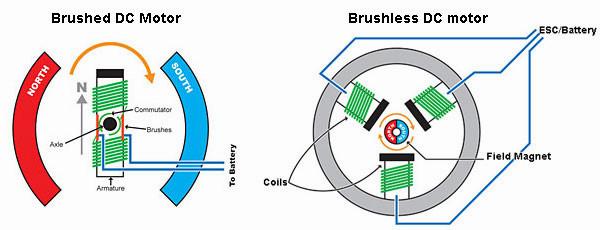
What are the benefits of using a brushless electronic speed controller?
Brushless electronic speed controllers (ESC) are honestly a game changer in the world of drones and RC vehicles. The first advantage they offer is that they don’t have brushes. This means less friction and heat, which translates into a more efficient and long-lived system. That’s right, more fun time and less maintenance headache. We love that, don’t we?
By optimizing the power that is sent to the motor, performance and control are significantly improved. Imagine sailing through the sky or cruising in your RC car with better precision and speed, wouldn’t that take your thrill to another level? And an added bonus: they’re often quieter. So no more being that drone guy with a flying lawnmower.
Finally, these modern marvels are generally more adaptive and flexible. They’re capable of interacting with modern software, enabling features like real-time telemetry and fine-tuning of parameters. So, whether you’re into racing or simple recreational flying, brushless ESCs have got you covered.
To put it simply, brushing off brushes gives you a power-packed performance, greater efficiency and versatility, and enhanced control. Now, isn’t that worth considering for your next drone or RC vehicle upgrade?
The Unseen Heroes of Modern Technology: Electronic Speed Controllers
The world of engineering and technology is fascinating indeed and the Electronic Speed Controller (ESC) plays a key role in so many applications, more than you might realize! Think about drones swirling in the sky, capturing breathtaking footage, or electric bicycles making your commute faster and more environmentally friendly. Guess what underpins these technological marvels? Yes, it’s the ESC.
For instance, in a drone, the ESC plays a critical part in controlling the speed of the motors to maintain the stability of the flight, without which we wouldn’t be able to capture those stunning aerial views with such precision. In electric bikes, ESCs manage the speed of the bike and efficiency of the battery, ensuring you have a smooth ride each time.
Beyond the hobbyist realm, commercial and professional applications, too, harness the power of ESCs. The burgeoning field of electric vehicles, for instance, heavily relies on ESCs. They are the unseen heroes managing the speed and performance of your fancy electric cars, making your drive smooth and energy-efficient.
The ESC market, consequently, is a rapidly flourishing one. According to EETimes, the ESC market is expected to experience a significant growth spike, fueled by the surge in electric vehicles and drones.
So, when someone next asks you, “what are electronic speed controllers?” you could casually mention their invaluable contribution in making our gadgets tick. In case they want to delve deeper, you could suggest they check out some leading ESC manufacturers and their offerings, such as Turnigy’s Brushed ESC, or Castle Creation’s Phoenix Edge.
Whether it’s zipping around the skies in drones, enjoying a breezy ride on your e-bike, or cruising in your electric vehicle, you’ve now understood that ESCs certainly play a pivotal role in our modern, tech-driven world.
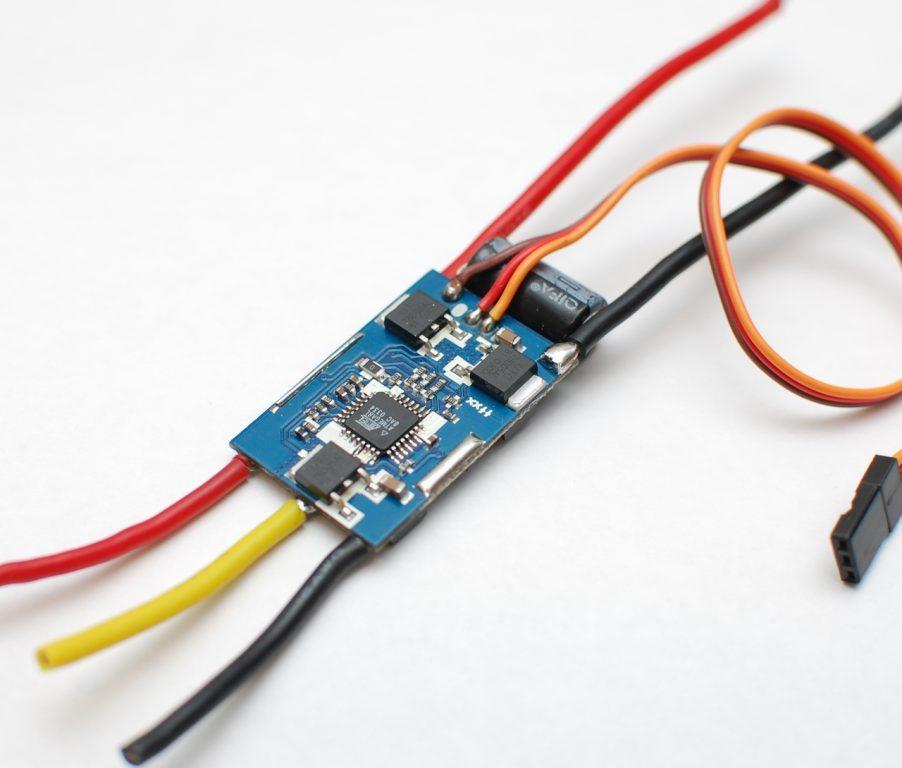
What are some popular electronic speed controller manufacturers and their offerings?
Hobbywing, Castle Creations and Traxxas are a few big names in the arena of electronic speed controllers (ESCs), each bringing their distinct punch to the table. Hobbywing’s reputation precedes itself, known for products like the Platinum Pro series, suitable for both flying and racing. It caters to a broad spectrum of customers, pros, and beginners alike.
Castle Creations leans more on the higher end, with their ‘Mamba Monster’ and ‘Sidewinder’ series being synonymous with superior performance. Their ESCs offer advanced tuning features that are music to the ears of the skilled hobbyist. It’s almost like a custom suit, made to fit your specific desires.
On the other side, with Traxxas, you can’t help but appreciate their commitment to reliability and support. Their ‘Velineon’ ESC is a preferred choice for folks dabbling in off-road RC cars. It’s almost like a trusty sidekick, ready for your numerous backyard bashing adventures. Remember though, these are just the tips of the iceberg. Other notable manufacturers such as Tekin and HPI also deserve a mention!
All these companies recognize the need for adrenaline-inducing speed, precise control, and unwavering reliability. They are always pushing the envelope and redefining the boundaries of what’s possible. As you find your feet (or should I say wheels?) in the world of electronic speed controllers, do take a moment to soak in the passion, the innovation, and endless possibilities each brand offers!
As we zoom into the future, electronic speed controllers are showing no signs of slowing down. They are evolving in tandem with the electric vehicle revolution, opening new realms of possibilities. The global electronic speed controllers market, including those for drones, is projected to cruise to USD 11.2 billion by 2026. That’s a testament to how intrinsic electronic speed controllers are becoming in our drive towards a greener planet.
In a bid to meet growing demand, manufacturers of ESCs are racing to capitalize on advances in technology. This includes higher capacity ESCs for larger electric vehicles, more energy-efficient designs, and even integrated control systems. It’s an exciting time to witness the evolution of ESC technology, and this trend is only going to accelerate in the years to come.
Whether you’re an enthusiast exploring a new RC hobby, an engineer delving into robotics or someone intrigued by the workings of your electric scooter, understanding the role of an ESC will undoubtedly enrich your experience. Delving into the world of electronic speed controllers isn’t just about understanding a piece of technology – it’s about appreciating how such tiny components contribute to major technological leaps. The story of the ESC is indeed the story of electronics meeting innovation, efficiency, and sustainability.

